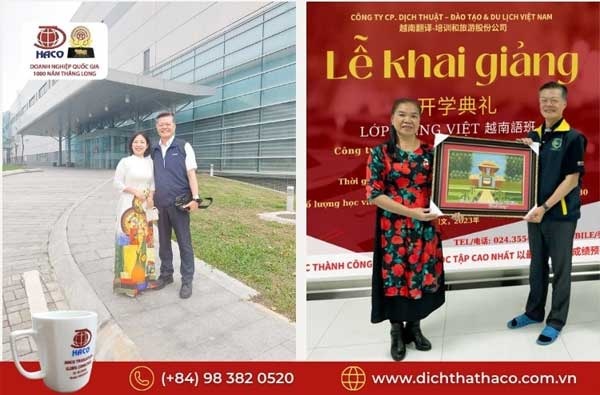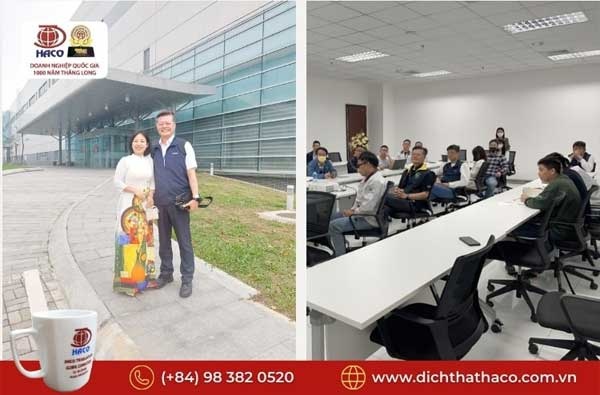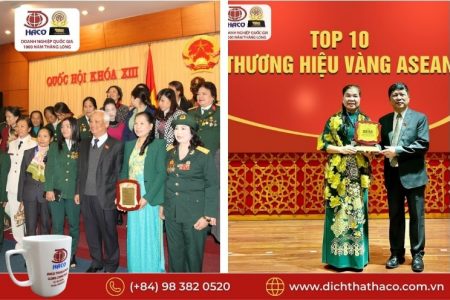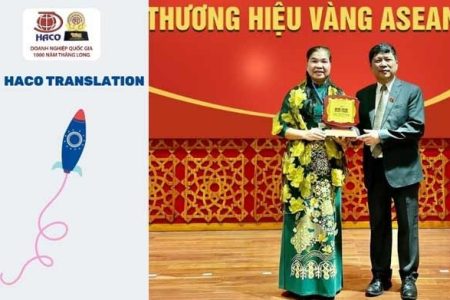Teaching Vietnamese to Chinese people can be a rewarding experience for both the teacher and the student. It is a great way to bridge the cultural gap between the two countries and to help Chinese people learn more about the language and culture of Vietnam.
With the right approach, teaching Vietnamese to Chinese people can be an enjoyable and educational experience. This guide will provide tips and advice on how to effectively teach Vietnamese to Chinese people.
Haco - Teaching Vietnamese Chinese - Part 3
Exploring the Benefits of Teaching Vietnamese to Chinese People
The ability to speak multiple languages is a valuable asset in today’s globalized world. As the world becomes increasingly interconnected, the ability to communicate in multiple languages is becoming increasingly important. For this reason, many people are turning to language learning as a way to expand their horizons and open up new opportunities. One language pairing that is becoming increasingly popular is the pairing of Vietnamese and Chinese. Teaching Vietnamese to Chinese people can offer a number of benefits, both for the learners and for the teachers.
One of the primary benefits of teaching Vietnamese to Chinese people is the opportunity to foster cultural understanding. By learning a language, learners gain insight into the culture and history of the language’s native speakers. This can help to bridge cultural divides and create a more harmonious relationship between the two cultures. Additionally, learning a language can help to break down stereotypes and create a more positive view of the other culture.
Another benefit of teaching Vietnamese to Chinese people is the opportunity to open up new job opportunities. As the world becomes increasingly interconnected, the ability to speak multiple languages is becoming increasingly important. By learning Vietnamese, Chinese people can open up new job opportunities in countries where Vietnamese is spoken. Additionally, learning Vietnamese can help Chinese people to better understand the culture and customs of Vietnam, which can be beneficial for business and travel.
Finally, teaching Vietnamese to Chinese people can be a rewarding experience for the teacher. Teaching a language is a great way to share knowledge and help others to learn. Additionally, teaching a language can be a great way to make connections and build relationships with people from different cultures.
In conclusion, teaching Vietnamese to Chinese people can offer a number of benefits, both for the learners and for the teachers. By learning a language, learners gain insight into the culture and history of the language’s native speakers, open up new job opportunities, and foster cultural understanding. Additionally, teaching a language can be a rewarding experience for the teacher, as it is a great way to share knowledge and build relationships with people from different cultures.

Strategies for Teaching Vietnamese to Chinese Learners
1. Utilize Visual Aids: Visual aids can be a great way to help Chinese learners understand the Vietnamese language. Utilizing pictures, videos, and other visual aids can help learners better understand the language and its pronunciation.
2. Incorporate Cultural Context: Incorporating cultural context into the lessons can help Chinese learners better understand the language. Explaining the cultural context of certain words or phrases can help learners better understand the language and its nuances.
3. Use Repetition: Repetition is a great way to help Chinese learners learn the Vietnamese language. Repeating words and phrases can help learners better remember the language and its pronunciation.
4. Provide Opportunities for Practice: Providing opportunities for practice is essential for Chinese learners to learn the Vietnamese language. Allowing learners to practice speaking and writing the language can help them better understand the language and its nuances.
5. Utilize Technology: Technology can be a great tool for teaching Vietnamese to Chinese learners. Utilizing online resources, such as apps and websites, can help learners better understand the language and its pronunciation.
6. Encourage Interaction: Encouraging interaction between learners can help them better understand the language. Allowing learners to practice speaking and writing with each other can help them better understand the language and its nuances.

Overcoming Challenges in Teaching Vietnamese to Chinese Students
Teaching Vietnamese to Chinese students can be a challenging task due to the differences in language structure and cultural background. However, with the right strategies and techniques, teachers can help their students to become proficient in the language. Here are some tips for overcoming the challenges of teaching Vietnamese to Chinese students.
First, it is important to create a comfortable learning environment. This means providing a safe space for students to ask questions and make mistakes without fear of judgement. Additionally, teachers should be patient and encouraging when teaching Vietnamese to Chinese students. This will help to build trust and foster a positive learning atmosphere.
Second, teachers should focus on teaching the basics of the language first. This includes pronunciation, grammar, and vocabulary. Once students have a good foundation in the language, they can then move on to more complex topics. Additionally, teachers should provide plenty of practice opportunities for students to practice their new skills.
Third, teachers should use a variety of teaching methods to engage their students. This includes using visuals, audio, and interactive activities. Additionally, teachers should incorporate cultural elements into their lessons to help students better understand the language.
Finally, teachers should be aware of the cultural differences between Vietnamese and Chinese. This includes understanding the different customs and traditions of each culture. By doing so, teachers can better explain the language and help their students to become more proficient in it.
By following these tips, teachers can help their students to become more proficient in Vietnamese. With patience, dedication, and the right strategies, teachers can help their students to overcome the challenges of learning a new language.

Incorporating Technology into Teaching Vietnamese to Chinese People
Incorporating technology into teaching Vietnamese to Chinese people can be a powerful tool for language learning. Technology can provide a range of resources and activities that can help learners to acquire the language more quickly and effectively.
One way to use technology in teaching Vietnamese to Chinese people is to provide online resources. This can include websites, apps, and other digital materials that can be used to supplement traditional teaching methods. For example, websites such as Duolingo and Memrise offer a range of activities and resources that can help learners to practice and improve their language skills. Additionally, there are a range of apps available that can be used to practice pronunciation, grammar, and vocabulary.
Another way to use technology in teaching Vietnamese to Chinese people is to use video conferencing tools. This can be used to facilitate virtual classes, allowing learners to interact with their teacher and other students in real-time. This can be a great way to practice speaking and listening skills, as well as to get feedback from the teacher. Additionally, video conferencing tools can be used to connect learners with native speakers, allowing them to practice their language skills in a more natural setting.
Finally, technology can also be used to create interactive activities and games. These can be used to engage learners and make learning more fun and enjoyable. For example, there are a range of online quizzes and games that can be used to practice vocabulary and grammar. Additionally, there are a range of virtual reality tools that can be used to create immersive language learning experiences.
In conclusion, incorporating technology into teaching Vietnamese to Chinese people can be a powerful tool for language learning. Technology can provide a range of resources and activities that can help learners to acquire the language more quickly and effectively. By using online resources, video conferencing tools, and interactive activities and games, teachers can create an engaging and effective learning environment for their students.
HACO TRANSLATION COMPANY – THE 1ST PRESTIGIOUS TRANSLATION SERVICE PROVIDER IN VIETNAM

COME WITH HACO TO FEEL THE DIFFERENCE AND COMPARE;
YOU WILL SEE THE BRAND WORTHY TO CHOOSE
20 years of accompanying enterprises
Thông tin liên hệ:
Địa chỉ Miền Bắc: Số 2, Ngõ 68, Ngụy Như Kon Tum, Phường Nhân Chính, Quận Thanh Xuân, Hà Nội
Địa chỉ Miền Nam: 2A/3 Nguyễn Thị Minh Khai, P. Đa Kao, Quận 1, TP.HCM Địa chỉ
Singapore : 391B Orchard Road, Ngee City Tower B Singapore 238874
Di động: +84 983 820 520
Điện thoại & Fax: +84 24 3554 3604
Email: hanoi@dichthuathaco.vn












